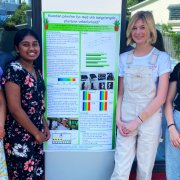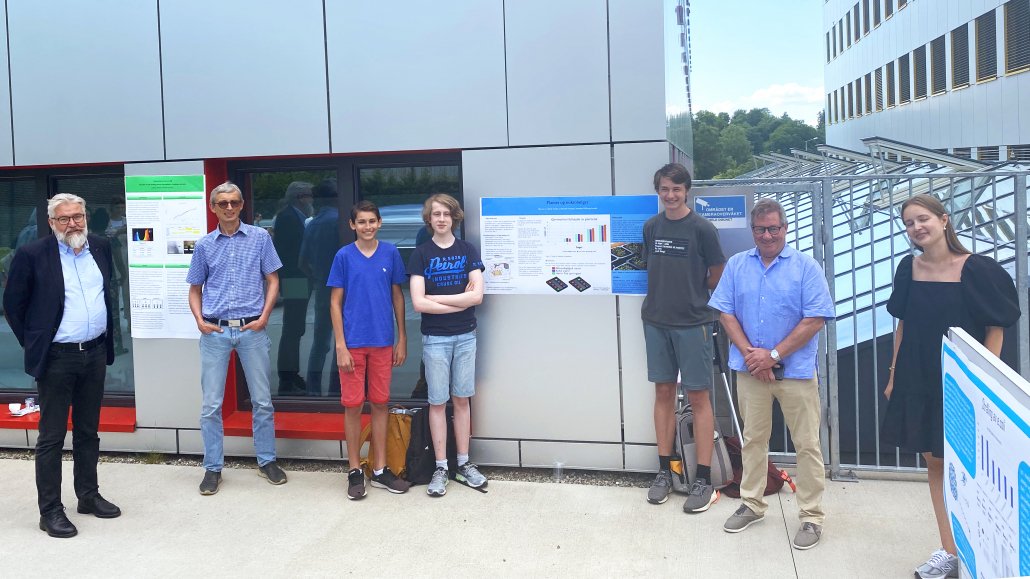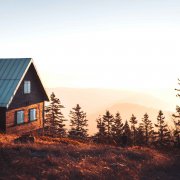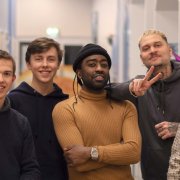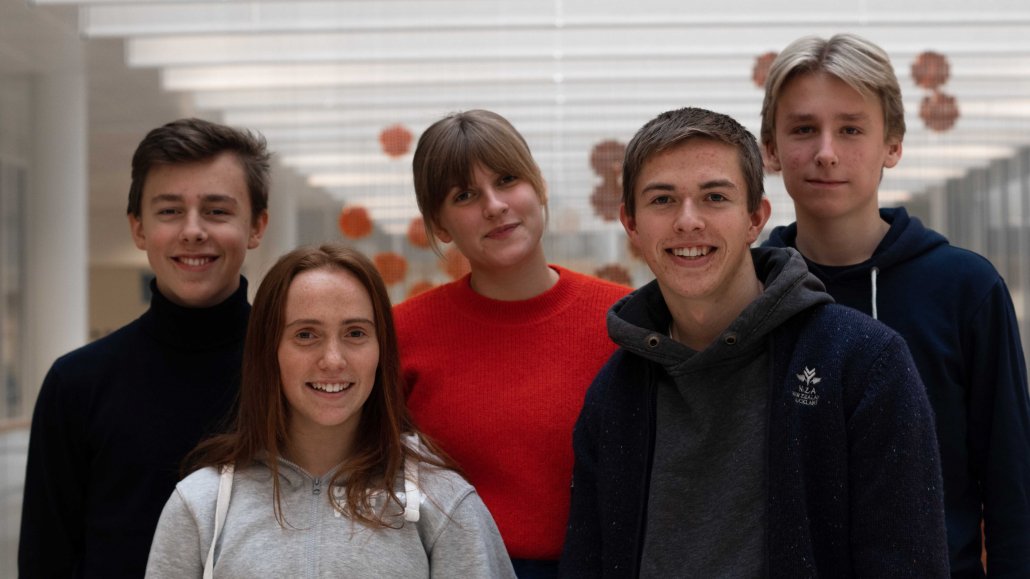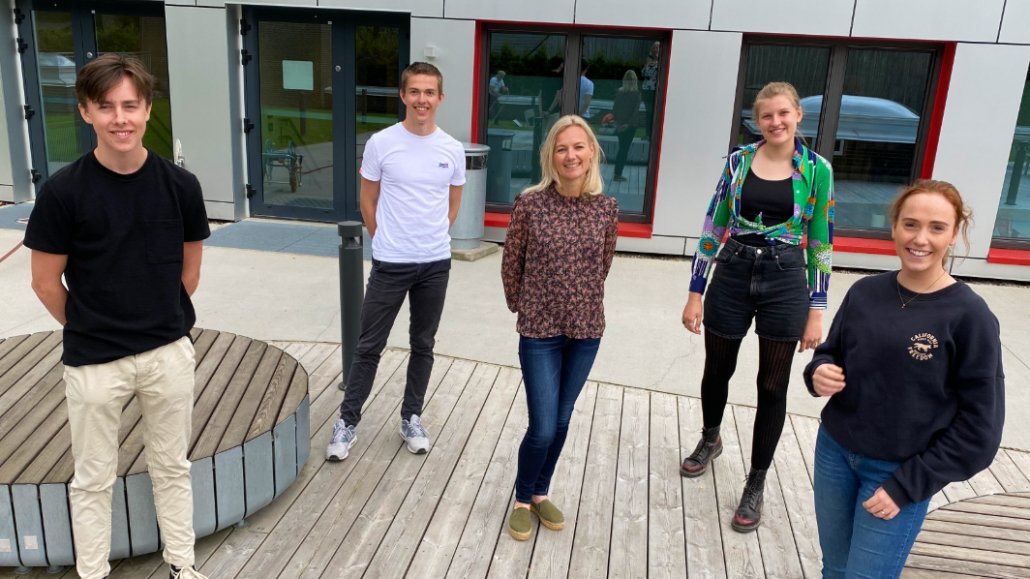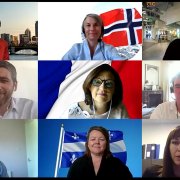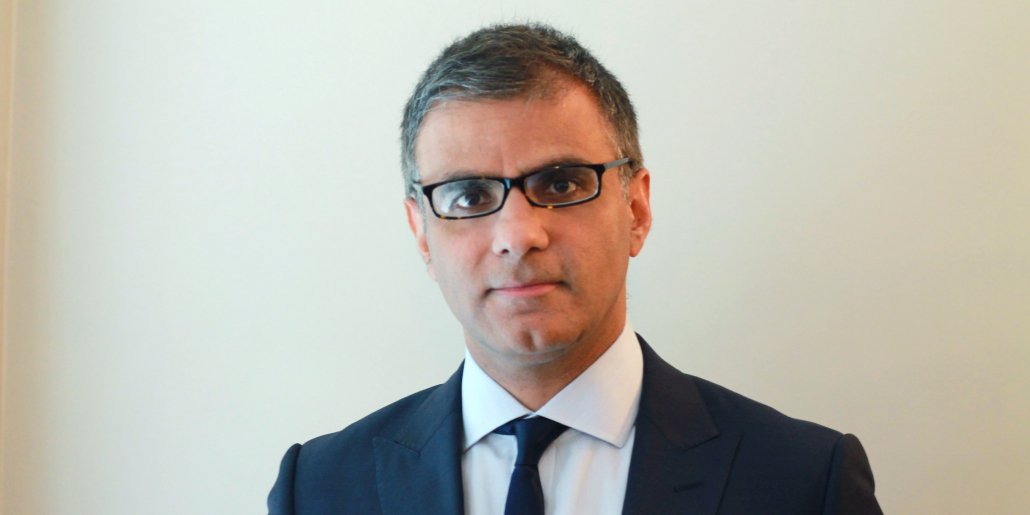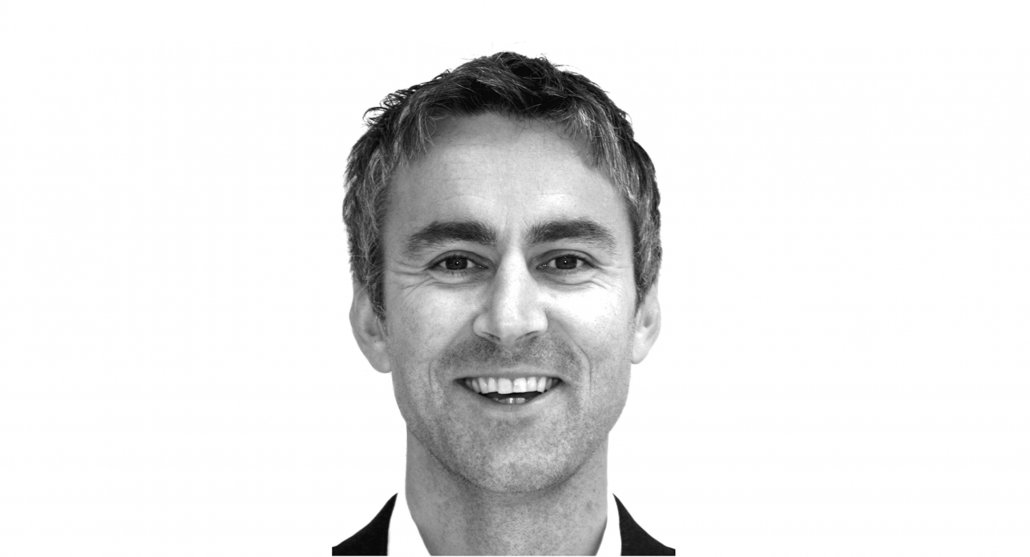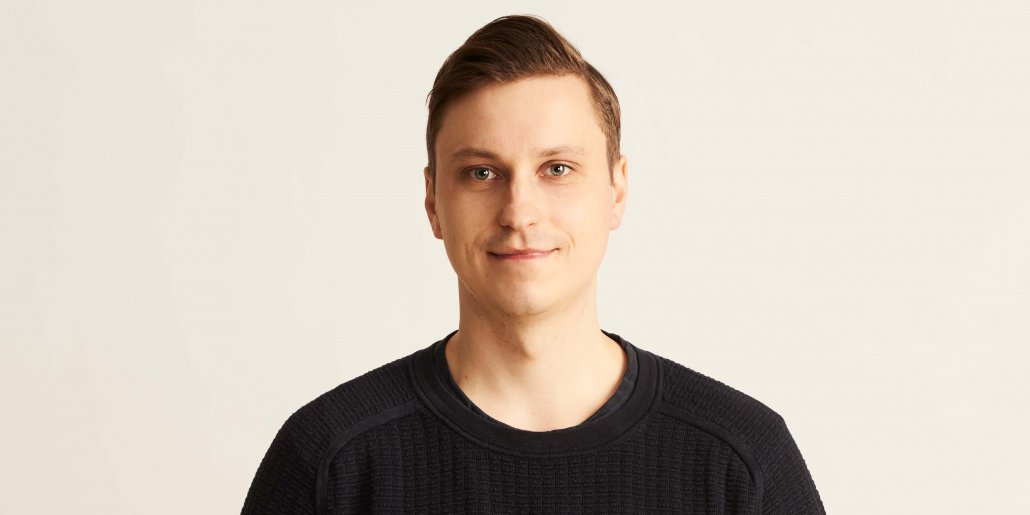Ullern students presented their own research
This article was originally published in Norwegian on the School Collaboration website.
Arranging a poster session may seem like an unusual way to end the school year, but for Ullern’s researcher students it is the perfect way to finish.
The first year of the Researcher Programme at Ullern Upper Secondary School was brought to an end by the students presenting their research projects to the four mentors, the principal, their teachers and co-students. A sunny, warm morning in June the Ullern schoolyard was transformed into a poster session, an activity that normally only takes place at science conferences.
The presentation of their research projects is the “grand final” of the school year for the students on the Researcher Programme, says Monica Flydal Jenstad and Ragni Fet, who are the two teachers in charge of the programme.
“The students have worked on their own experiments related to radiation and made real research posters. This has been a bit challenging, because of the corona pandemic and studying from home during a long period. They were supposed to present their research projects to the four mentors already in April, but this was of course not possible. It is really fun that we managed to do this at all,” says Ragni.
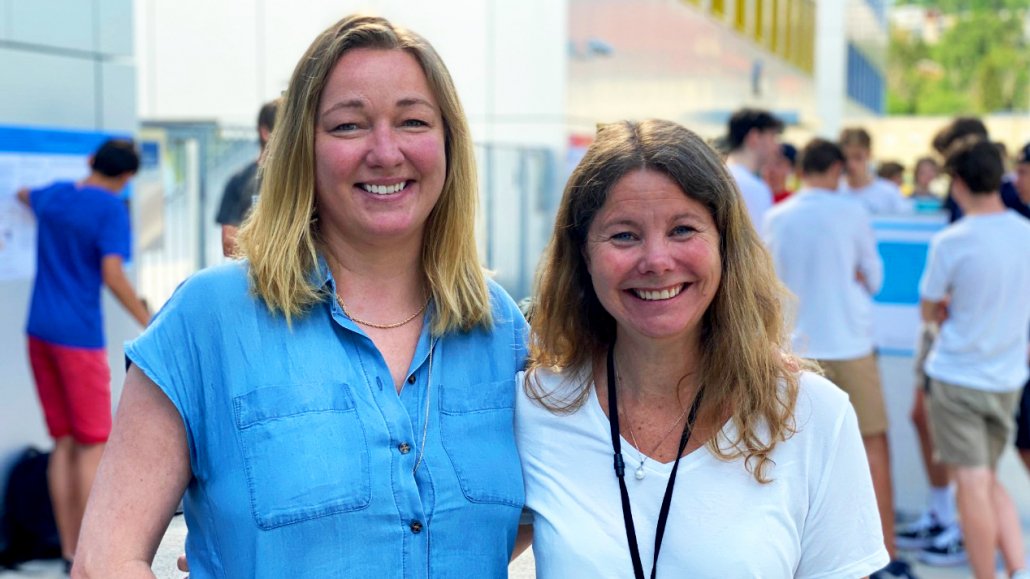
The teachers Ragni Fet and Monica Flydal Jenstad are responsible for the Researcher Programme. They were really impressed by the research projects the students presented during their first poster session. Photo: Elisabeth Kirkeng Andersen
The four mentors that Ragni is referring to is Jónas Einarsson, CEO of Radforsk and founder of Oslo Cancer Cluster and Oslo Cancer Cluster Innovation Park, Øyvind Kongstun Arnesen, consultant in Radforsk and former CEO of Ultimovacs, Simone Mester, cancer researcher at Oslo University Hospital and former student at Ullern Upper Secondary School, and Bjørn Klem, general manager of Oslo Cancer Cluster Incubator and former head of research in Photocure.
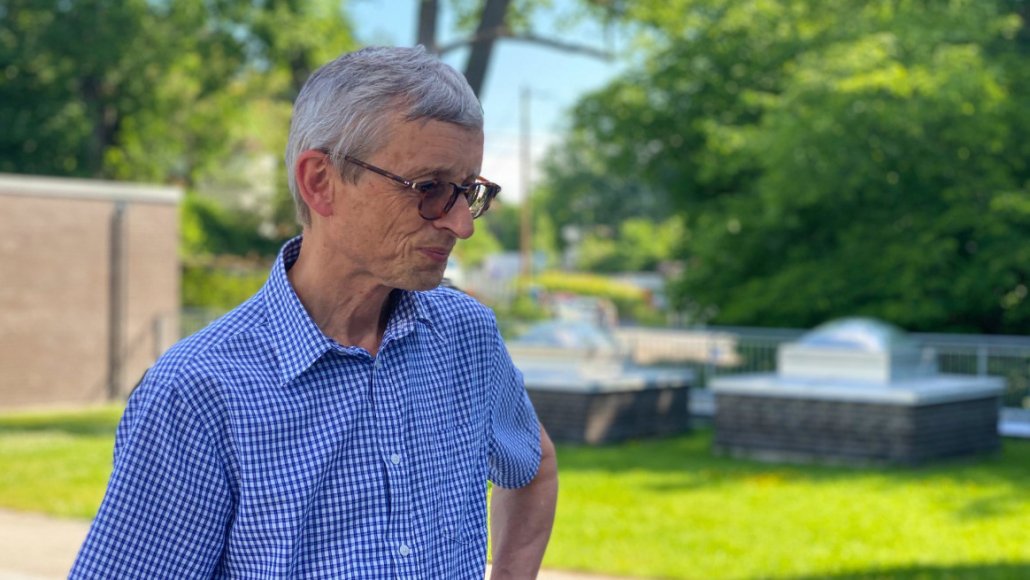
Bjørn Klem, general manager of Oslo Cancer Cluster Incubator and former head of research in Photocure, is studying the research posters in depth.
The mentors’ task is to advise the students during their studies and contribute with guidance, inspiration and experience. The mentors were more than pleased with what was presented to them:
“I tutored the students in February when they were designing the experiments and brainstorming. It was really fun to see the finished results in the poster format. I think everyone reflected well on their own results and it was fun to discuss with them. I am very impressed by the results!” said Simone Mester.
Jónas Einarsson agreed:
“I am impressed by the students’ work in spite of all the complications with the closed school. They explored interesting issues and executed the projects very well.”
Øyvind Kongstun Arnesen believes the students had a great advantage in their experienced teachers, who both have backgrounds in cancer research, when performing their own research projects:
“I think the students were especially good at formulating clear hypotheses. It is obvious they have understood the main reason for this type of research. They have great teachers and clear heads.”
A great success
A total of ten research projects were presented in poster format in the schoolyard. The principal, the science teachers, the mentors and the students walked among the posters, just like at a real science conference, read about the research and asked questions to the research talents.
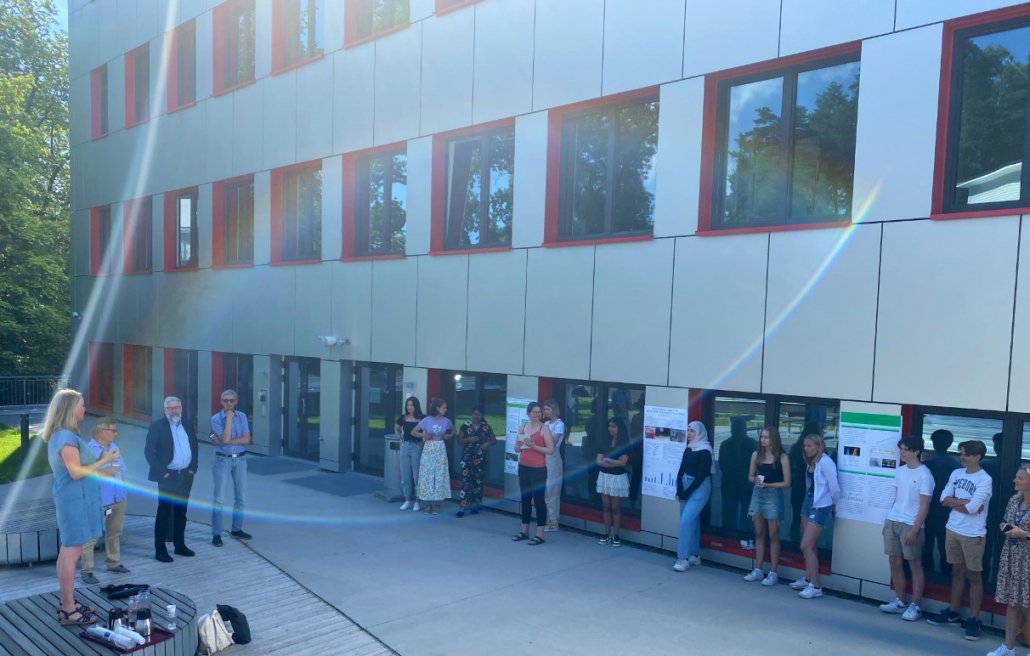
The teacher Ragni Fet opens the poster session. To her left: the mentors Øyvind Kongstun Arnesen, Jónas Einarsson and Bjørn Klem. In front of her: the nervous students prepared to present. Photo: Elisabeth Kirkeng Andersen.
“The poster session was a success! The students were brilliant. Both the mentors and teachers were impressed. The students’ task was to design and complete an experiment of their choosing related to the topic of radiation and to present the results of the experiment on a poster,” said Ragni Fet.
Two projects were awarded special prizes out of the ten research projects that were presented. The first prize was awarded by a jury consisting of the four mentors and the teachers. The second prize was awarded by the students themselves.
The winners
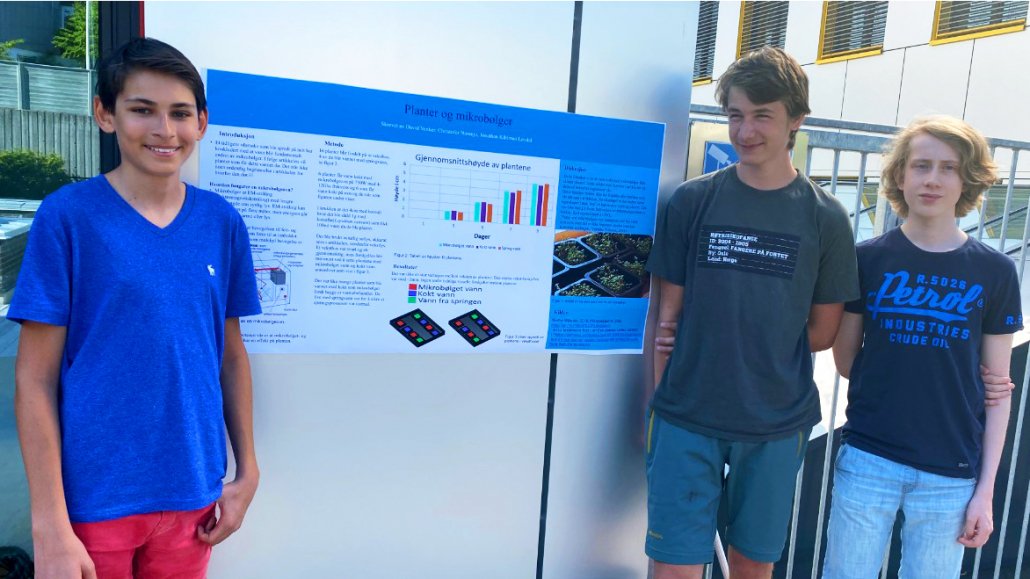
“Research into plants and microwaves” by Christofer Woxholt, David Venker and Jonathan Løvdal won the Jury’s Choice.
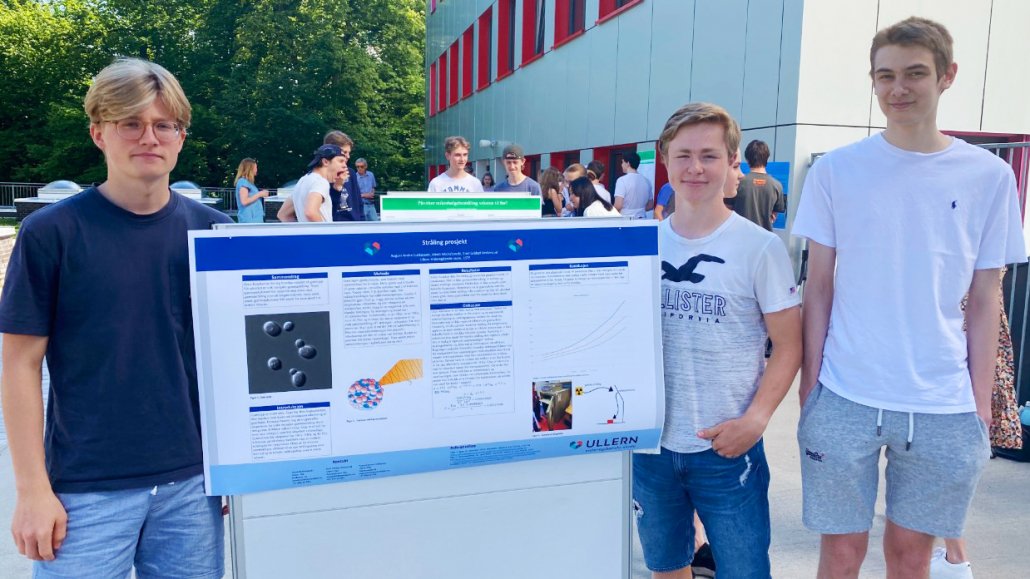
“Research into radiation of yeast” by Alexander Hustad, Alexander Marks and Martin Thormodsrud won Student’s Choice. Photo: Elisabeth Kirkeng Andersen.
The runner-ups
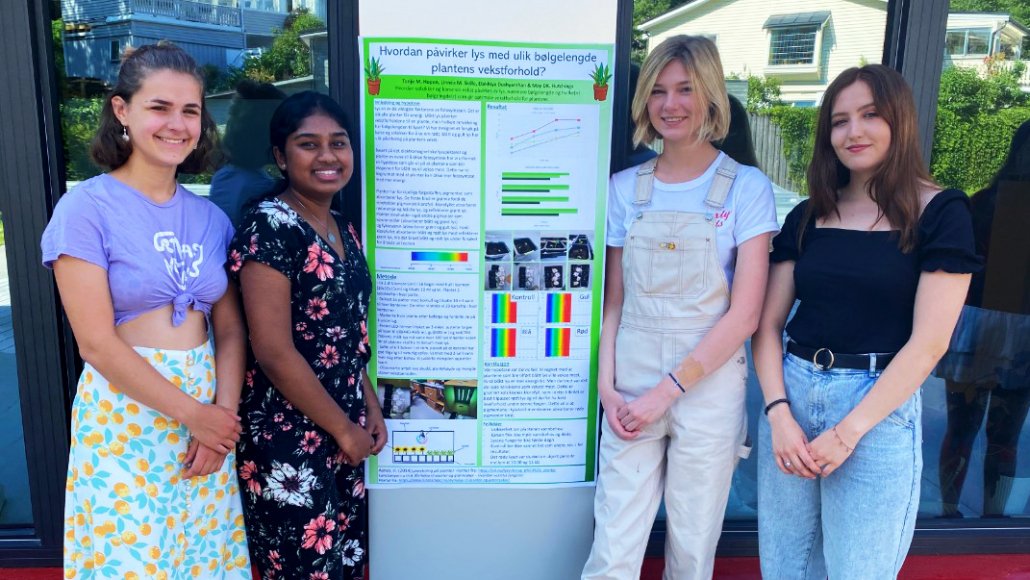
“How does light with different wavelength affect the growth of plants?” by Linnéa M. Skille, May Dagny Kollandsrud Hutchings, Tonje Marie Bjørklund Hopen and Elakhiya Dushyanthan won second place in both the Student’s Choice and the Jury’s Choice. Photo: Elisabeth Kirkeng Andersen
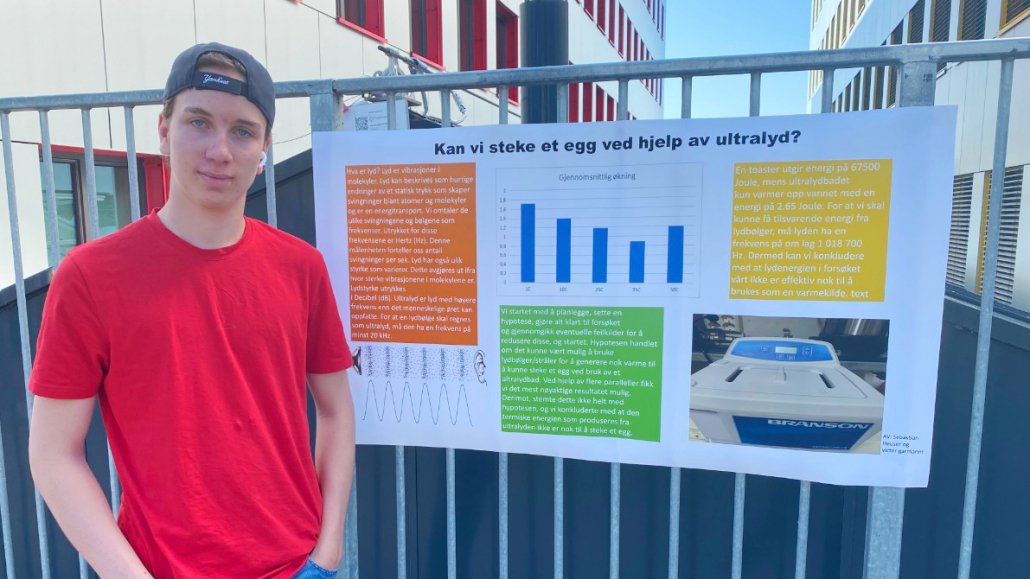
“Can you fry an egg with ultrasound?” by Sebastian Heuser and Victor Garman won a shared second place in the Student’s Choice category. Sebastian was unfortunately not present for the poster session. Photo: Elisabeth Kirkeng Andersen
All research posters
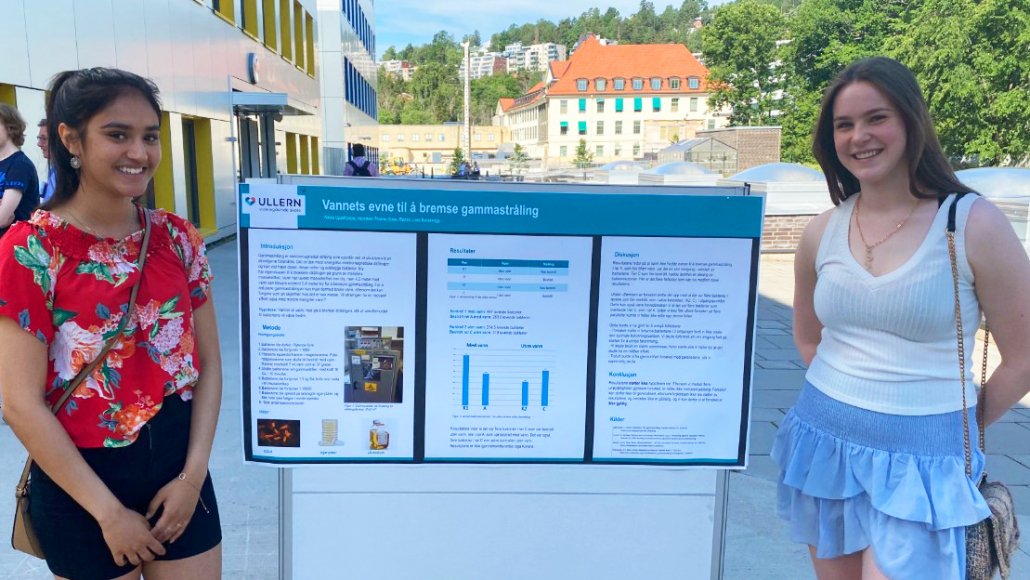
“Water’s ability to slow gamma radiation” by Nikita Upadhyaya, Henrikke Thrane Steen Røkke and Lara Barazangy. Lara was not present when the picture was taken. Photo: Elisabeth Kirkeng Andersen
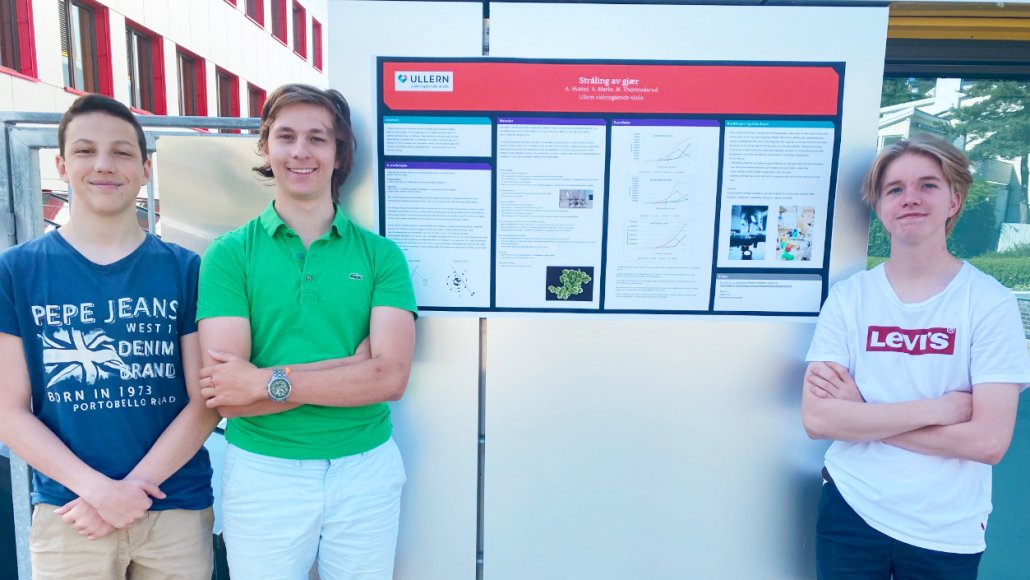
“The effect of different amounts of radiation on yeast cells” by Jakub Michalowski, August André Lukkassen and Emil Gråbøl-Undersrud. Photo: Elisabeth Kirkeng Andersen
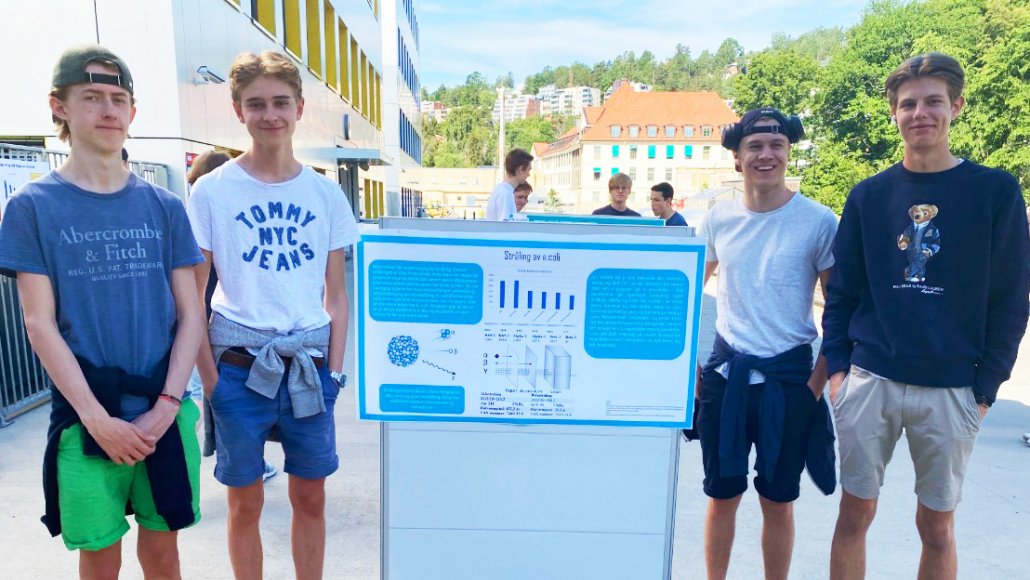
“Radiation of e-coli” by Peder Hellesylt, Carl Thagaard, Fredrik Røren and Felix Gundersen. Photo: Elisabeth Kirkeng Andersen
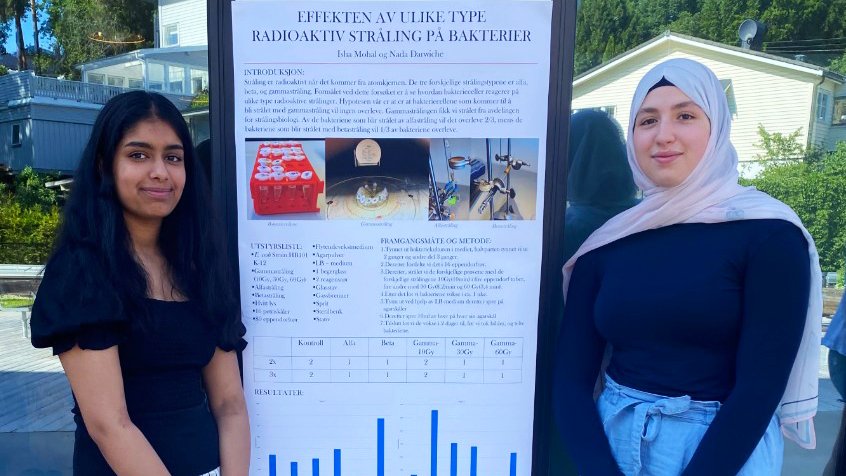
“The effect of different types of radioactive radiation on bacteria” by Isha Mohal and Nada Darwiche. Photo: Elisabeth Kirkeng Andersen
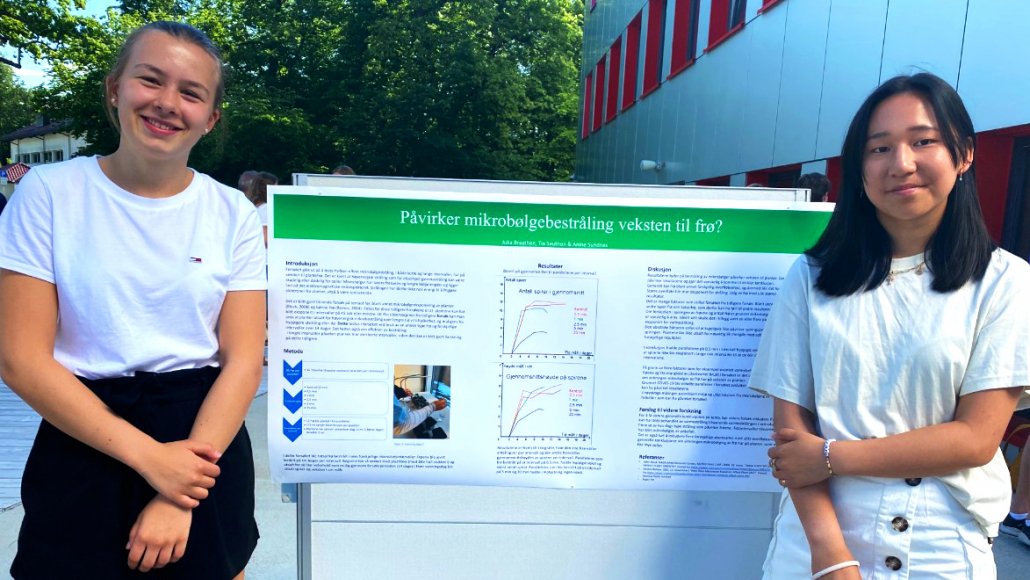
“Does microwave radiation affect the growth of seeds?” by Anine Sundnes, Julia Beatrice Braaten and Tia Sauthon. Tia was not present when the photo was taken. Photo: Elisabeth Kirkeng Andersen
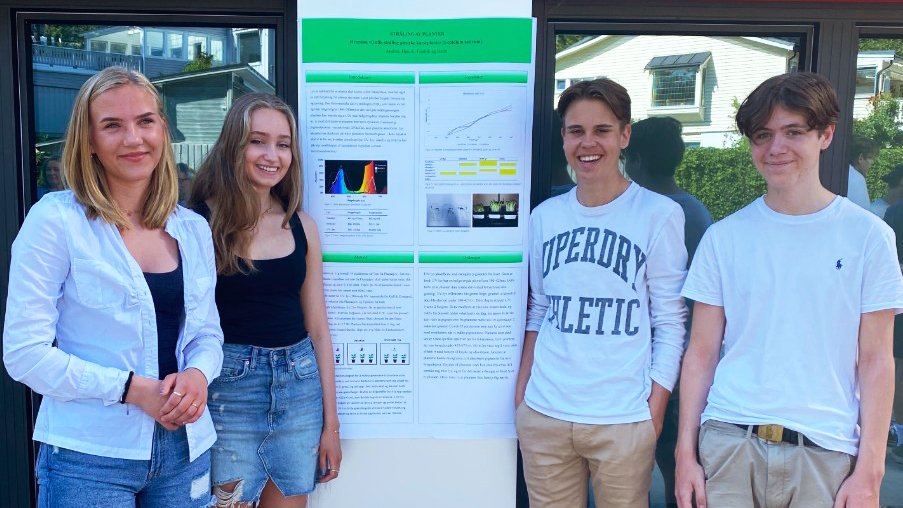
“Radiation of plants” by Iselin Langås Sunde, Andrea Øfstaas, Henrik E. Corneliussen and Fredrik Hansteen. Photo: Elisabeth Kirkeng Andersen
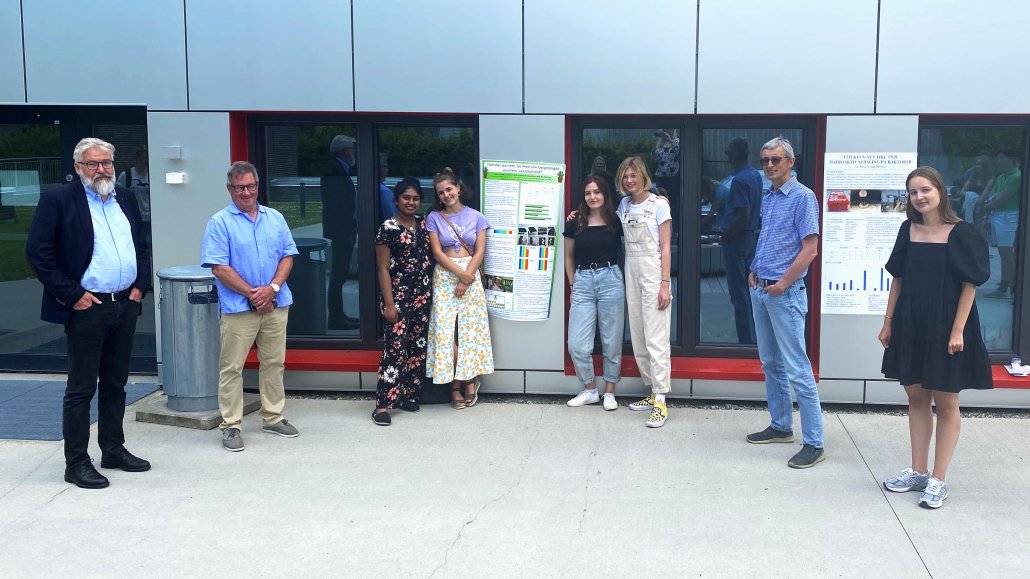
The mentors together with the group that got second place in Jury’s Choice and Student’s Choice. Photo: Elisabeth Kirkeng Andersen.
More about the Researcher Programme
The Researcher Programme (Forskerlinja) is a unique opportunity for motivated and talented aspiring researchers. The students receive a tailored three-year educational programme with a specialisation in the natural sciences. The academic year 2019/2020 is the first year that Ullern Upper Secondary School has run this programme, which offers a first insight into biomedical research, technology and innovation. Teachers and researchers give the students a taste of how world-class research is done. The students learn in completely new ways in the Oslo Cancer Cluster Innovation Park, which Ullern Upper Secondary School is a part of.
The students have through the years participated in the unique collaboration with Oslo Cancer Cluster, which offers them exciting work placements with researchers, companies and laboratories associated with the cluster and the Oslo Cancer Cluster Innovation Park. Because of the corona pandemic, the students have unfortunately missed out on many of the planned activities.
The students still have two years left of the programme and they will present two more research projects, but first, they will enjoy a well-deserved summer holiday.

